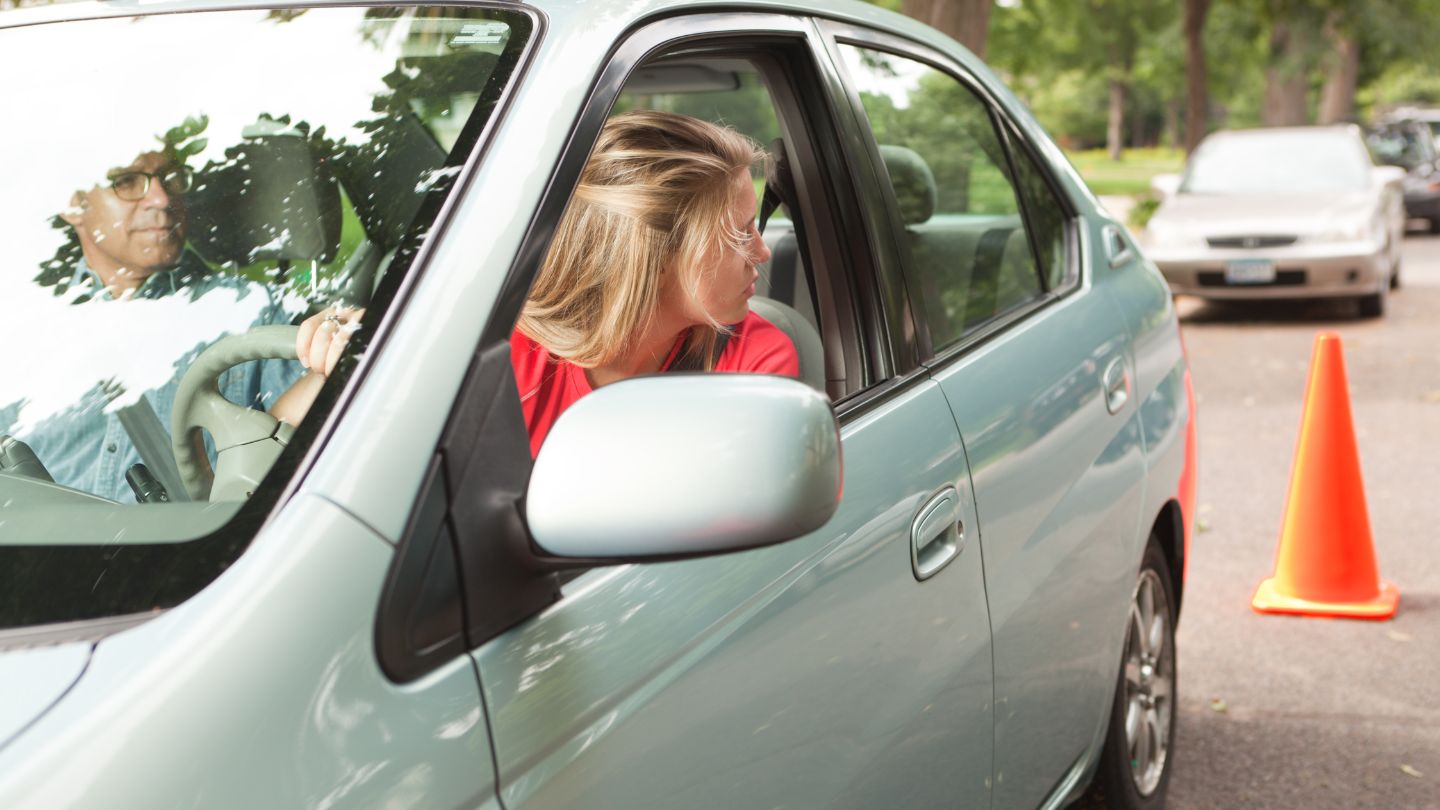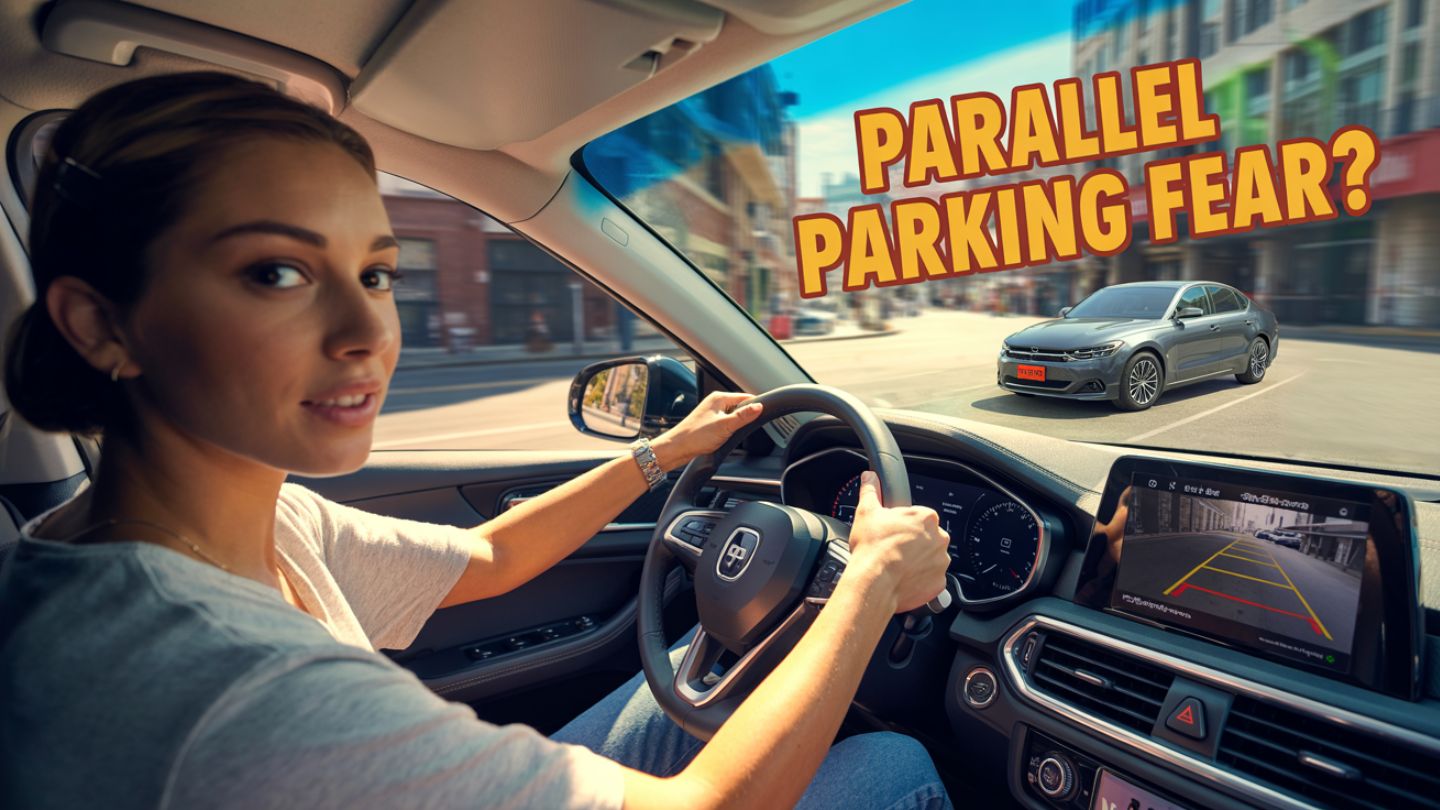Struggling with parallel parking? There are a few reasons why parallel parking is still an important skill to learn, even if some people think it’s outdated. Driver’s ed can help reduce the fear of parallel parking. In this blog, we explain how driver’s ed can help reduce the fear of parallel parking through lessons and practice that can build your confidence.
Key Takeaways
- Driver’s Ed provides structured, professional guidance that helps nervous learners build confidence in parallel parking through personalized feedback and gradual exposure.
- Using techniques such as reference points, controlled steering, and managing speed and distance is crucial for mastering parallel parking effectively.
- A supportive environment, combined with positive self-talk and practical resources, significantly helps reduce anxiety and empowers new drivers to master parallel parking.
Introduction to Driver’s Ed
Driver’s education is the first step for new drivers looking to build confidence and develop essential driving skills. For many, parallel parking is one of the most challenging parts of the driving test, but it’s also a skill that can be mastered with the right approach. In a supportive environment, such as a driving school, students are guided through the learning process by skilled instructors who understand the challenges new drivers face.
Through hands-on practice and step-by-step instruction, driver’s ed helps students learn how to parallel park, giving them the confidence needed to handle real-world driving situations. As students spend more time behind the wheel, they not only improve their parking skills but also become more comfortable and aware drivers overall. By focusing on both the technical and mental aspects of driving, driver’s education lays the groundwork for success, helping new drivers become skilled, confident drivers ready to take on the road.
Understanding the Role of Driver’s Ed in Reducing Parallel Parking Anxiety

Driver’s education offers structured guidance, helping nervous learners gain confidence. Comprehensive and professional driver education programs build essential skills and confidence, ensuring students are well-prepared for real-world driving challenges. Breaking down parallel parking into manageable steps reduces anxiety. Qualified instructors support and provide personalized feedback, empowering students to tackle parallel parking challenges.
Parallel parking doesn’t have to be dreaded. With professional guidance, step-by-step learning, and real-world practice sessions, learners can build confidence and parallel park like a pro.
The Importance of Professional Guidance
Certified instructors offer targeted feedback and techniques tailored to individual needs. Personalized feedback enhances the learning experience by identifying specific areas for improvement. In a non-judgmental and encouraging atmosphere, students are more willing to practice, leading to mastery. Positive self-talk is a powerful tool for overcoming fear and building confidence during the learning process.
Professional help is invaluable in transforming nervous learners into confident drivers during the most effective ways learning process to lead aware to success.
Read More: How to Select the Ideal Online Driving School
Building Confidence Step by Step
Driver’s education uses a gradual exposure approach to help nervous drivers face their fears. Practicing parallel parking involves:
- Starting in low-stress environments to build confidence and reduce anxiety.
- Beginning in less crowded areas to build comfort.
- Progressing to busier spots as confidence increases.
Experienced drivers recommend following this sequence for effective learning.
This first step-by-step guide ensures that learners build confidence progressively, ensuring they feel safe and in control behind the wheel while promoting confident driving and confidence on the road, ultimately fostering confidence behind the wheel.
As you progress through each step, remember to drive with confidence and maintain a positive mindset to master new skills and handle any road situation.
Real-World Practice Sessions
Real-world practice sessions enable drivers to apply their skills in various parking scenarios, boosting competence. Always be aware of other drivers and your surroundings during real-world practice sessions to ensure safety. Practicing in different environments helps learners adapt to various driving conditions, crucial for the road test and overall driving success.
Start practicing in a controlled setting and gradually move to more challenging scenarios to build a comprehensive skill set.
Techniques Taught in Driver’s Ed to Master Parallel Parking

Mastering parallel parking involves understanding the theory and practicing extensively. Here are the steps to follow:
- Find a suitable parking spot.
- Use your turn signal to indicate your intention to park.
- Maintain a distance of about 2-3 feet from the parked car.
- As you start reversing, turn the steering wheel almost fully to the right or left, positioning your car at a 45-degree angle.
- Practice regularly in various environments to build comfort and adaptability.
Using the small triangular window of your car can help assess your position when parallel parking. Regular practice leads to mastery, essential for passing driving tests.
Using Reference Points Effectively
Using reference points is an effective way to parallel park. Align your rear bumper with the front bumper of the parked car in front. This initial positioning makes entry easier. Before moving further, check your rear-view and side mirrors for obstacles.
When your front door mirror aligns with the rear bumper of the car in front, stop the car. Consistently checking mirrors, blind spots, and surroundings ensures a safer maneuver.
Controlled Steering Wheel Movements
Controlled steering wheel movements are vital for mastering parallel parking in cars. Experienced drivers emphasize slow, deliberate movements when parking in tight spaces.
Start by practicing with cones, beginning with wider distances to gain confidence. Then follow these steps:
- Angle your car toward the curb.
- Start turning the wheel to the left.
- Straighten the wheels.
- Reverse slowly into the space.
Positioning your car near the curb helps angle it correctly into the spot. Once aligned with the curb, straighten the steering wheel to ensure proper positioning.
Managing Speed and Distance
Managing speed and distance is crucial for successful parallel parking. As you approach the spot, signal your intention to park. Maintain a safe distance by pulling up about two feet from the car in front of your chosen spot.
While reversing, use mirrors to avoid obstacles and ensure a safe maneuver. If too close to the curb or the vehicle behind, continue reversing the parking maneuver to maintain control and prevent accidents.
Keeping the car centered in the parking space demonstrates control and precision, essential for safe parking.
Read More: The Dangers of Speeding
The Driving Journey
Every driver’s journey begins with learning the basics, and mastering parallel parking is a key milestone along the way. The process starts in low-traffic areas and parking lots, where new drivers can practice without the pressure of heavy traffic. This safe environment allows for gradual exposure to more challenging driving conditions, helping to reduce driving anxiety and build confidence step by step. Navigating parking lot safety is an essential skill for drivers to ensure a secure and stress-free experience. By staying alert, following traffic rules, and practicing proper parking techniques, drivers can effectively reduce risks and enhance safety for everyone.
As drivers continue practicing, they become more aware of their surroundings and learn how to control their vehicle with greater precision. Following a step-by-step guide, new drivers can focus on each part of the parallel parking process, from signaling and positioning to steering and adjusting for enough space. Over time, this consistent practice leads to progress, turning nervous drivers into skilled drivers who feel confident behind the wheel.
The driving journey is all about building confidence and overcoming fears through practice and patience. With the right support and guidance, new drivers can overcome their anxiety, develop the skills needed to pass the driver’s exam, and enjoy a greater sense of control and confidence on the road.
Final Thoughts
Mastering parallel parking is a common challenge for many new and returning drivers, but a well-structured driver’s education program can make all the difference. This blog explores how professional instruction reduces anxiety around parallel parking by offering practical techniques, guided practice, and ongoing support, helping learners overcome their fears and build confidence behind the wheel.Returning to driving after a long break can be a challenge, but with the right approach, it’s entirely achievable. This blog guides adult drivers through managing driving anxiety, ensuring their vehicle is safe and roadworthy, and refreshing essential knowledge of road signs and rules. It also highlights the importance of starting with familiar routes, practicing defensive driving techniques, using technology for added support, and building confidence through regular practice. By following these steps, you can make your journey back to the road safe, comfortable, and stress-free.
If you’re ready to regain your driving skills, EasyDriversEd offers driver’s education in Waco, TX that residents can trust. Their comprehensive adult driver’s ed courses are tailored for adult drivers, providing flexible online options, expert instruction, and a full range of resources to refresh your knowledge and build your confidence. With supportive guidance and an engaging curriculum, it helps adult learners drive safely and efficiently on Texas roads.
Frequently Asked Questions
Why is parallel parking still an important skill to learn?
Parallel parking is a critical skill for navigating urban areas, tight parking spaces, and real-world driving scenarios. It demonstrates control, precision, and confidence behind the wheel, which are essential for safe driving.
How does driver’s education help with parallel parking?
Driver’s education provides structured lessons, professional guidance, and hands-on practice to help learners master parallel parking. Instructors break down the process into manageable steps, offering personalized feedback to build confidence.
What techniques are taught in driver’s ed to improve parallel parking?
Techniques include using reference points, controlled steering, managing speed and distance, and practicing in low-stress environments before progressing to more challenging scenarios.
How can I reduce anxiety about parallel parking?
Reducing anxiety involves practicing in a supportive environment, using positive self-talk, and gradually exposing yourself to more complex parking situations. Professional guidance from certified instructors can also help ease nerves.
What should I do if I struggle with parallel parking during the driving test?
Stay calm, take your time, and follow the steps you’ve practiced. Use your mirrors, check your surroundings, and remember the techniques taught in driver’s ed. Confidence and preparation are key to success.

